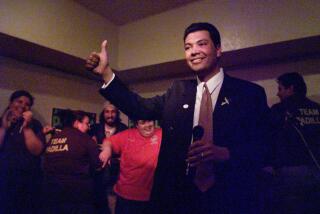2 Disparate Visions Forged San Fernando
- Share via
San Fernando, the Valley’s first town site, is the only city completely bordered by Los Angeles, a distinction that would probably sit well with the pair of former state senators, Charles Maclay and George K. Porter, who started it all.
Maclay seems to have enjoyed the higher profile of the two. Born in Pennsylvania in 1822, he was sent to Northern California as a Methodist missionary. He soon opened a general store to supplement his annual $100 stipend, became a vigilante for a time in then-lawless San Francisco and, reportedly on the advice of his doctor, left the stress of the ministry--to enter politics.
With word from his good friend Gov. Leland Stanford that the railroad would be going through what was known as “the Valley of San Fernando,” he sailed south.
Maclay liked what he saw from his campsite in the Cahuenga Pass and in 1874 bought the northern half of the Valley for $125,000, immersing himself in his newest and most lucrative career: property development.
Porter, who had been a shoe manufacturer in San Francisco, joined Maclay in this venture. Although he secured the larger share of property and is said to have charmed the ladies with his violin playing at parties, Porter’s vision for the Valley appears to have been more modest. As a Maclay granddaughter put it during a 1950s interview, “Maclay was a promoter. The Porters came here to farm.”
Although he founded a city, Maclay, who died in 1890 in San Fernando, was said to be proudest of the Maclay College of Theology--for which he donated 10 acres near what is now Glenoaks Boulevard between Brand Boulevard and the Pacoima Wash--built and endowed with $150,000.
Named for his brother, Robert S. Maclay, also a missionary who became its first dean, the seminary later moved to another Methodist school, USC, before eventually becoming the Claremont School of Theology.
More to Read
Sign up for Essential California
The most important California stories and recommendations in your inbox every morning.
You may occasionally receive promotional content from the Los Angeles Times.













